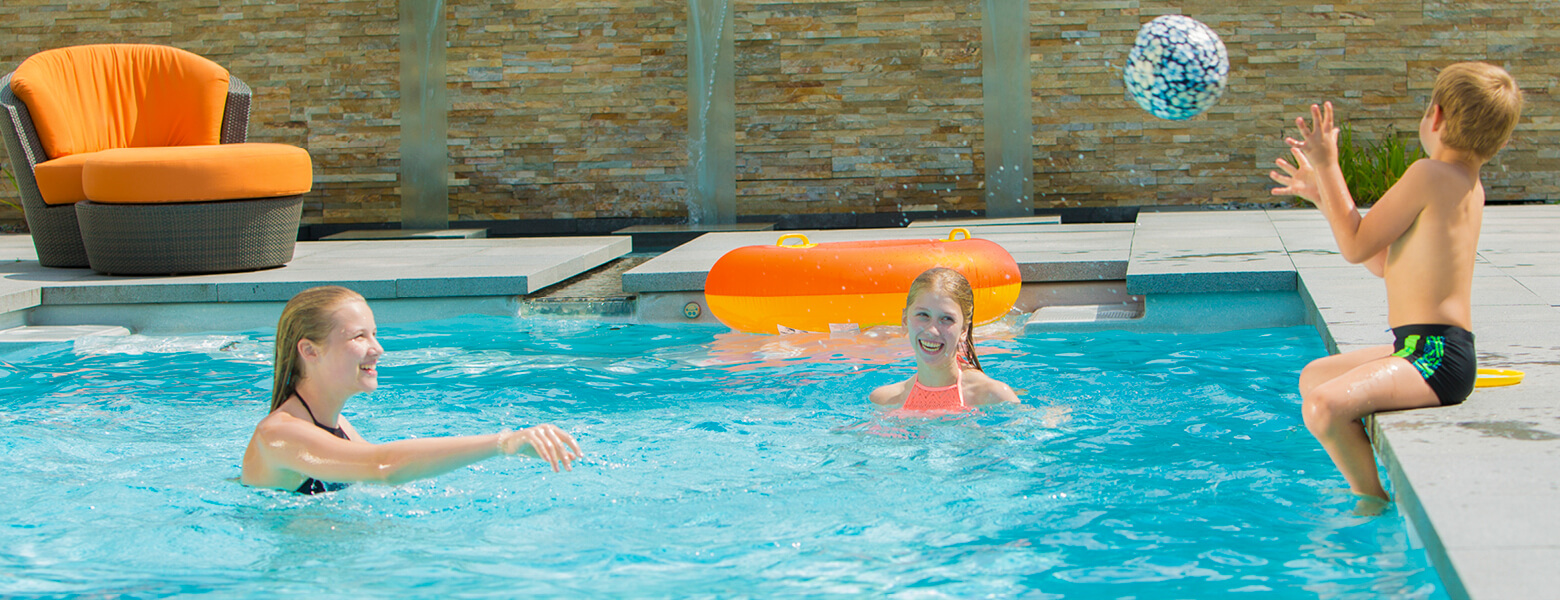When a water is in balance, it is said to be neither corrosive nor scale-forming. In other words, it will not deposit a layer of calcium scale neither will it dissolve an existing layer of scale.
Il s'agit ici d'eaux de baignade naturelles accessibles au public (également appelées eaux de surface). La qualité de l'eau de ces espaces de vie naturels est contrôlée régulièrement par les organismes de santé pendant la période de baignade (environ toutes les deux semaines). Pour procéder au contrôle de la qualité de l'eau, les autorités nationales se basent sur la directive « 2006/7/CE du Parlement européen et du Conseil du 15 février 2006 » relative à gestion de la qualité des eaux de baignade et abrogeant la directive 76/160/CE.
Do you have green and/or cloudy pool water? You could have an algae growth, a common problem for many pool owners. Algae is more likely to grow in sunlight, warm temperatures, low chlorine levels, and at high phosphate levels.
Basic requirements for healthy bathing and swimming are state-of-the-art water treatment. Both in the interest of health and in order to maintain the value of a facility, water treatment should be performed according to the motto "as much as necessary and as little as possible".
Ce terme désigne des piscines en plein air entre-tenues et étanchéifiées dans lesquelles l'eau est traitée de manière biologique. Il s'agit donc d'écosystèmes artificiels. Ce genre de conception permet un Type de baignade alternatif dont la devise serait « retour à la nature ».
As we have seen pH measurement and control is essential in any pool or spa to maintain the value within the desired range. For heavily used pools, the pH value should be measured continuously and adjusted automatically, for other pools it is sufficient to measure the pH value regularly and adjust it if necessary.
Since 1976, Austria has had a Bäderhygienegesetzt (BHyg G, Bathing Hygiene Act), which is the basis for providing perfect water quality in all public swimming pools. This makes Austria one of the few countries in the world to regulate hygiene in this area by law. Efforts of this kind have also been made in Germany, but despite several attempts, no political consensus for a legal regulation has been found to date. Although there is the Infections-Schutzgesetz (IfSG, Infection Protection Act) with relatively general wording and a recommendation of the Bundesumweltamt (UBA, Federal Environment Agency), concrete framework conditions are only defined in a technical guideline of the Deutsche Industrie Norm - DIN (German Industry Standard) 19 643. Technical progress is now developing continuously, naturally also in process engineering, i.e. water treatment. This process must be taken into account within the framework of the generally recognised rules of technology. This is done by means of a cyclical inventory of the defined framework conditions and, where necessary or appropriate, supplementing and/or new processes, for example ultrafiltration in the DIN.
In order to guarantee the hygienic condition of the water under all circumstances, pool users have a wide range of options for water treatment.
There are numerous terms referred to when it comes to treating and testing pool water but to the beginner these can sometimes be confusing. The following gives the meaning of the most common terms:

